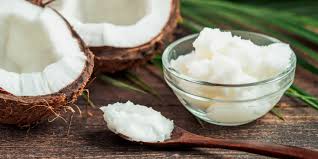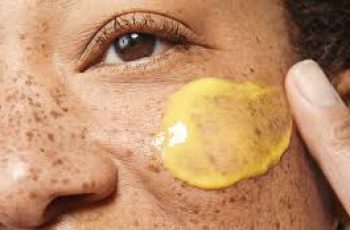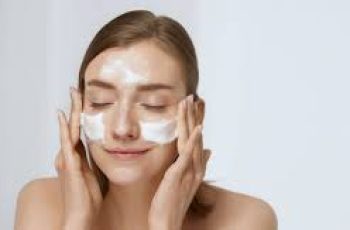
The Science of Caprylic/Capric Triglyceride in Skin Care: Benefits, Uses, and More
If you’ve ever glanced at the ingredient list on your favorite moisturizer or serum, chances are you’ve come across the term “caprylic/capric triglyceride.”
While the name may seem complex or intimidating, there’s no need to worry.
This ingredient is commonly used in skin care for its exceptional moisturizing abilities and to enhance the texture and performance of products.
Despite its somewhat scientific-sounding name, caprylic/capric triglyceride is a safe, effective, and versatile ingredient that offers a wide range of benefits for skin health.
In this article, we’ll dive deep into the science behind caprylic/capric triglyceride, its active compounds, benefits, and why it’s such a popular addition to many skincare formulas.
What Is Caprylic/Capric Triglyceride?
Caprylic/capric triglyceride is a combination of medium-chain fatty acids (caprylic acid and capric acid) and glycerol (a sugar alcohol compound).
These triglycerides are naturally derived from coconut oil or palm kernel oil.
They are used in skincare products due to their ability to moisturize the skin, as well as to help stabilize formulations, making them more pleasant to use.
To break it down further:
Triglycerides are a type of fat that consists of three fatty acids bonded to a glycerol backbone. This fat plays a key role in locking in moisture and improving the texture of topical products.
Caprylic acid (octanoic acid) and capric acid (decanoic acid) are two medium-chain fatty acids with a significant role in caprylic/capric triglyceride’s performance in skincare.
These fatty acids offer both moisturizing and stabilizing benefits.
The presence of caprylic/capric triglyceride in skin care products is especially notable in those designed for hydration, product stability, and texture enhancement.
What Are the Active Compounds in Caprylic/Capric Triglyceride?
Caprylic/capric triglyceride’s benefits stem from its two primary active compounds: caprylic acid and capric acid. Let’s explore these further:
Caprylic Acid (Octanoic Acid)
Caprylic acid is an 8-carbon chain fatty acid known for its antibacterial and anti-inflammatory properties.
Its molecular size allows it to be lightweight, making it easy to incorporate into formulations for smooth texture. Here’s how it benefits the skin:
Anti-inflammatory properties: Caprylic acid helps to calm and soothe inflamed skin, making it especially useful for individuals with sensitive or irritated skin.
Antibacterial effects: This fatty acid has mild antimicrobial properties, which can help to reduce the risk of bacterial growth on the skin.
Emollient properties: Caprylic acid helps the skin retain moisture by forming a barrier on the skin’s surface. It leaves the skin feeling soft and hydrated without being greasy or heavy.
Capric Acid (Decanoic Acid)
Capric acid, with a 10-carbon chain, shares many of the benefits of caprylic acid but is slightly thicker in molecular structure, providing a richer feel without overwhelming the skin.
Its key benefits include:
Improved hydration: Capric acid helps to seal moisture into the skin by creating a barrier that prevents water loss.
Stabilizing ingredient: The stability of capric acid is a key reason why caprylic/capric triglyceride is used in formulations.
It helps prevent product separation, ensuring a smooth consistency and extending shelf life.
Non-irritating: Unlike some other fats and oils, capric acid is less likely to cause irritation, making it suitable for sensitive skin.
Together, these two fatty acids help to create a lightweight, hydrating, and non-greasy texture, making caprylic/capric triglyceride ideal for use in moisturizers, serums, and other skincare products.
How Does Caprylic/Capric Triglyceride Benefit the Skin?
Now that we know the components of caprylic/capric triglyceride, let’s explore how they work in skincare formulations:
1. Moisturizing and Hydrating
Caprylic/capric triglyceride is a powerful humectant and emollient. As an emollient, it helps to soften and smooth the skin, making it more supple and moisturized.
It works by forming a protective barrier on the skin, which locks in moisture, preventing it from evaporating.
This makes it especially beneficial for individuals with dry skin or those who live in dry climates.
Since caprylic/capric triglyceride has a lightweight texture, it is suitable for all skin types, including oily and acne-prone skin.
Unlike other heavier oils (like coconut oil), it does not leave a greasy residue, making it ideal for use in a wide range of formulations.
2. Enhancing Texture and Spreadability
One of the key roles of caprylic/capric triglyceride in skincare products is improving spreadability. It helps formulations glide on easily and evenly, ensuring that they are applied smoothly.
This is particularly helpful in serums, moisturizers, and facial oils, where even and consistent application is important.
Moreover, caprylic/capric triglyceride helps to stabilize the overall texture of a product, preventing separation and ensuring uniformity throughout the product’s shelf life.
It is commonly used to create creams, lotions, and even some types of sunscreens.
3. Non-Comedogenic
Unlike coconut oil, which is known to be comedogenic (meaning it can clog pores), caprylic/capric triglyceride is generally considered non-comedogenic.
This makes it a safe choice for those with oily or acne-prone skin.
The absence of lauric and oleic acids, both of which can clog pores, makes caprylic/capric triglyceride a far less likely culprit in acne formation.
For those with oily skin or those prone to breakouts, this ingredient provides moisture without risking clogged pores or aggravating existing acne.
4. Product Stability and Shelf Life
Caprylic/capric triglyceride is also beneficial for the stability of a product.
It helps prevent the separation of ingredients, ensuring that the product remains consistent throughout its shelf life.
This property is particularly valuable in products that contain water-based ingredients or are formulated to be more liquid in nature, such as serums and face oils.
Side Effects of Caprylic/Capric Triglyceride
Caprylic/capric triglyceride is generally regarded as safe and effective for most skin types.
It is non-irritating and unlikely to cause allergic reactions, making it a mild ingredient suitable for sensitive skin.
However, as with any cosmetic ingredient, some individuals may experience irritation, though this is rare.
In some cases, those with extremely sensitive skin or allergies to coconut or palm-derived products may experience a mild reaction.
If you have concerns, it’s always a good idea to conduct a patch test before applying a new product.
Where to Find Caprylic/Capric Triglyceride in Skin Care Products
You will find caprylic/capric triglyceride in a wide range of products, including:
Moisturizers and Hydrating Serums: Its ability to lock in moisture makes it a key ingredient in many hydrating skincare formulations.
Anti-Aging Creams: The ingredient helps create smooth, stable formulas, which is beneficial for products targeting fine lines and wrinkles.
Cleansers: Caprylic/capric triglyceride is often included in cleansers to improve spreadability and ensure that the product glides smoothly over the skin.
Face Masks: Used in face masks to enhance the smooth application and help active ingredients absorb more effectively.
Top brands and products often feature caprylic/capric triglyceride in their ingredient lists, such as in products from CeraVe, Neutrogena, and The Ordinary.
Is Caprylic/Capric Triglyceride Right for You?
Caprylic/capric triglyceride is a versatile ingredient that can benefit almost any skin type. It is especially ideal for:
Dry Skin: It locks in moisture and provides lasting hydration.
Oily Skin: It’s lightweight and non-comedogenic, offering hydration without clogging pores.
Sensitive Skin: It’s mild, non-irritating, and can help soothe inflammation.
However, it’s important to keep in mind that the overall efficacy of a skincare product depends on all its ingredients, not just one.
If you’re unsure whether a product containing caprylic/capric triglyceride is a good fit for your skin type, you can always take the Baumann Skin Type Quiz to get personalized product recommendations.
Conclusion
Caprylic/capric triglyceride is a beneficial, multi-functional ingredient in skincare.
Whether you’re looking to hydrate, smooth, or stabilize your skin care routine, this ingredient is likely to be an effective, non-irritating choice.
Its non-comedogenic properties make it especially suitable for acne-prone skin, and its ability to enhance the texture of formulations makes it a favorite among skincare manufacturers.
As always, make sure to check the overall formulation of the product and consider your individual skin type when incorporating new ingredients.
If you’re still unsure whether caprylic/capric triglyceride is right for you, taking a skin type quiz can help you make a more informed decision.
Your skin deserves the best care, and understanding the science behind the ingredients can help you make smarter choices for long-lasting, healthy skin!


